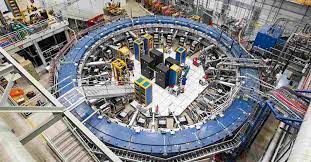
Newly published results of an international experiment hint at the possibility of new physics governing the laws of nature.
Daily Current Affairs Quiz 2021
The results of the experiment, which studied a subatomic particle called the muon, do not match the predictions of the Standard Model, on which all particle physics is based, and instead reconfirm a discrepancy that had been detected in an experiment 20 years previously.
The experiment, called Muon g–2 (g minus two), was conducted at the US Department of Energy’s Fermi National Accelerator Laboratory (Fermilab).
It measured a quantity relating to the muon, following up a previous experiment at Brookhaven National Laboratory, under the US Department of Energy.
Concluded in 2001, the Brookhaven experiment came up with results that did not identically match predictions by the Standard Model.
The Muon g–2 experiment measured this quantity with greater accuracy.
The Standard Model is a rigorous theory that predicts the behaviour of the building blocks of the universe.
It lays out the rules for six types of quarks, six leptons, the Higgs boson, three fundamental forces, and how the subatomic particles behave under the influence of electromagnetic forces.
The muon is one of the leptons. It is similar to the electron, but 200 times larger, and much more unstable, surviving for a fraction of a second.





